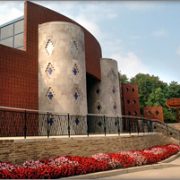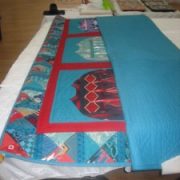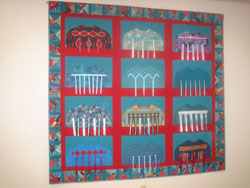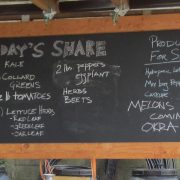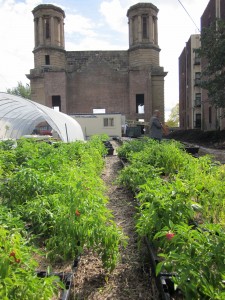uncovering the smithsonian’s jazz archives
Jazz saxophonist James Moody was raised in Newark, New Jersey, so it is little wonder that the Lincoln Park Coast Cultural District, the sole New Jersey Affiliate, celebrates his legacy so predominantly. In 2008 as part of the District’s annual Music Festival, they hosted a homage to James Moody, in which he himself played with many jazz luminaries, as well as with the Smithsonian’s Jazz Masterworks Orchestra.
When Moody passed away in 2010, Anthony Smith, Director of Communications and Community Affairs, and Producer of the Music Festival, knew that it was time for a major tribute to this legendary figure. That’s when he turned to the Smithsonian. In addition to a musical tribute and naming a housing unit in the District for Moody, Anthony wanted to highlight Moody’s career through images, and to create a photography exhibition in Lincoln Park’s community gallery.
With the help of archivists in the Archives Center of the National Museum of American History, Anthony found a collection of Stephanie Myers’ photographs, an artist and jazz photographer who donated prints to the Smithsonian in 2005 and 2009. In addition to images of Moody and his peers, she also captured timeless moments from prominent jazz festivals, such as La Grande Parade du Jazz in Nice, France, represented in the Archives Center’s collection of her works.
David Haberstich, Curator of Photography in the Archives Center, remarked that a great strength of the Archives Center’s holdings is material related to American music, especially jazz. “This includes a good representation of many fine photographers who specialize in photographing jazz musicians in action, up close and personal,” he said. “We’re eager for opportunities to exhibit these photographs and share them. We’re pleased to show them to anyone by appointment, from members of the general public to serious scholars.”
Although the Smithsonian’s prints could not be reproduced because of intellectual property concerns, seeing this collection “opened a door” for Anthony that led him directly to the photographer herself, who lives in New York City. Stephanie Myers was also a close friend to James Moody. “We hit it off immediately,” says Anthony. “She understood how we were trying to honor James, and wanted to be a part of it.”
Together, they consulted Moody’s discography and crafted an exhibition of 30 of Stephanie’s photographs that highlight Moody and the musicians who played with him throughout his 50+ year career. The prints will be arranged in the gallery much like a stage performance, with Moody surrounded by various members of the rhythm section and fellow soloists. (Many of these same musicians will be playing in the 6th Annual Music Festival in Newark, July 29-31, 2011.) In addition, the gallery will present 20 of the District’s own photographs from the 2008 Music Festival Tribute to Moody.
Music Speaks: Moody’s Musical Moods show will open on July 28, 2011 and run through October. Visitors to the exhibition will be encouraged to leave their memories and experiences with James Moody’s music. Several public programs are planned, including a photography workshop for youth with Stephanie Myers.
“Sometimes collaborations with Affiliates turn out differently than the original plan,” said Jennifer Brundage, National Outreach Manager in Smithsonian Affiliations. “It’s especially nice when it results in new opportunities we hadn’t imagined before!”




